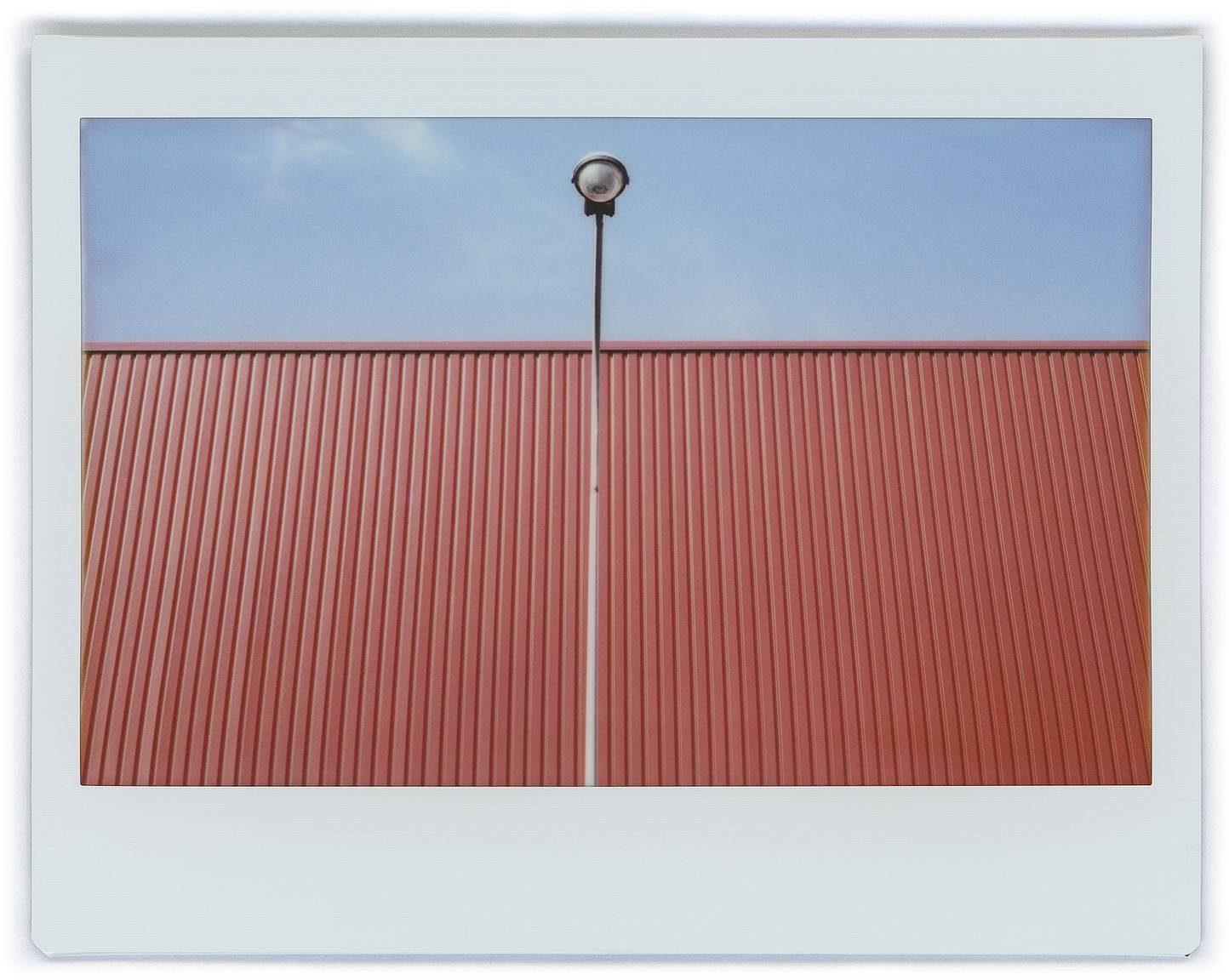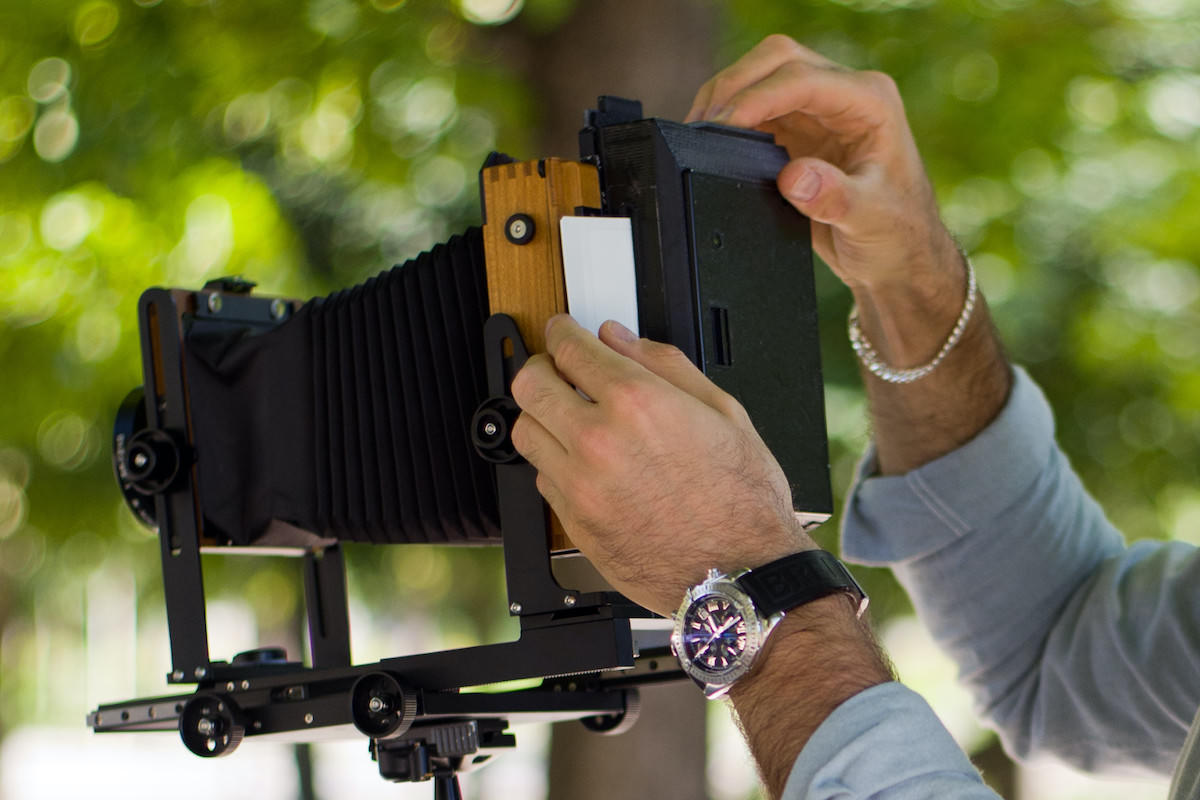Architecture at the Push of a Button – the Lomograflok on a Visit to Daniel Kobi in Zurich
2 7 Share TweetDaniel Kobi, aka @kobiflex, is a graphic designer, art director, and photographer from Zurich. He is particularly passionate about large format photography, so it was no question whether he would try out the LomoGraflok 4x5 Instant Back. In this article, Daniel shares his results and experiences with this unique instant back, so sit back and be inspired.
Hello Daniel and welcome to LomoMagazine! How did your journey with (analogue) photography begin? What does analogue photography mean to you?
In the 90s, before the rise of digital cameras, I photographed with a Lomo, which I had bought in the former GDR. I photographed mostly spontaneously and for fun. It was only in the spring of 2015 that I got hooked on analogue photography again when I saw a Rolleiflex in the window of a photoshop and spontaneously bought one. Taking photos with old cameras quickly became an obsession. Gradually, other classic cameras were added and soon I needed a darkroom for developing and enlarging. I started to reduce my professional workload and work 80% to have more time for my new hobby.
Analogue photography means a balance of craftsmanship to the purely digital design in my job as a graphic designer. Above all, however, it is a more intensive perception and examination of my own surroundings, be it in the city or in nature. Since I often have an analogue camera with me, I observe my surroundings much more intensively. How it changes, how the light and the seasons change it, and how people move around in it. Analogue photography definitely helps to train the eye and perception. Film costs and with medium format the image composition should be in one shot. This makes the impression much more conscious than with a digital camera.
How long have you been taking photos with a large-format camera? Do you remember your first large format photo?
The first picture was a blue hour night shot of Lake Zurich under a full moon. It was okay, nothing special. The main thing was that the exposure was right and the old Linhof Kardan Color worked.
What do you like most about the shooting experience with a large format camera? How is it different from shooting with 35mm or medium format?
It's very different, of course. Since setting up and adjusting the camera takes 10 minutes or more, all spontaneous motifs and situations are eliminated. And you can't do it without a tripod either. That's why I use 4x5" mainly for shooting either from a specific location or within a smaller radius of movement. I am always on foot. After the camera is set up and adjusted, I may wait a very long time for certain light situations. It's the exact opposite of point & shoot and has something very deliberate about it, similar to working with an enlarger in the darkroom.
Besides, a nice big old camera always arouses the interest of passers-by or walkers. It's almost impossible not to strike up a conversation with people, young or old. And they are always thrilled that this kind of photography still exists, often even amazed.
You have tested our new Graflok Instant Back. What was your experience with it, how did you like it?
At first, I was a bit skeptical because I didn't know Fuji Instax very well. But that subsided as soon as I got a feel for how this film "ticks". Since the weather was nice and the film seems to show its qualities particularly well, I chose motifs that were as colorful as possible and overexposed them very slightly. This gave the pictures something soft and pastel. To my astonishment, I liked them even better after scanning them large on the monitor. The slight blur became even more visible, which I really liked, as did the beautiful grain. The motifs may be formally strict and graphic, but they still have something gentle and picturesque.
I also like the narrower section of the Instax Wide format, which only uses part of the 4x5" area. The elongated format looks elegant. I don't see it as a restriction. And of course it's great that you can finally use an unlimited and relatively inexpensive instant film for 4x5" cameras. There is no such thing anymore unless you use old expired release films. Apart from being an artistic stylistic device in its own right, the Instax film serves excellently as exposure control. Since you can already see a 1/4 f-stop difference quite well, you can set the exposure perfectly if you want to insert a negative or slide film afterward. I could not yet use the specific advantages of tilt and shift with a 4x5" camera with these relatively distant subjects. Due to the nice weather and the high sensitivity of ISO 800, I had to work with a very small aperture. I will try this out at the next opportunity and in more diffuse weather.
You took wonderful street/architecture shots - did it affect your process that the photos were taken on instant film?
Thank you. Yes, in the sense that I could correct the cropping and exposure right away until the result seemed optimal. With a large-format, you always see the image upside down on the screen and you can't see any details. An instant film is of course very helpful for the optimal setting.
What advice would you give to photographers who want to try the Graflok Instant Back for the first time?
Either work outdoors in good, bright light conditions or indoors in a studio, etc. This is how Instax plays to its strengths best. It doesn't seem to like ordinary artificial light and low light - such as twilight. Or I just couldn't get it right. Otherwise trial & error. Instax never runs out and is even available in supermarkets in some places. Since the Instax film is developed after only 2 minutes, you can see the result relatively quickly and you can react and make corrections. In my experience, however, it develops a little within the first hour and becomes even darker. That is why I would tend to overexpose and never underexpose.

Last but not least: Do you have some inspiring words/tips for our readers?
In the past, separation films were mainly used as a means of controlling exposure and image composition. They were less regarded as a stylistic device in their own right. Today, however, people weep for the old separation films precisely because of their independent look. The LomoGraflok Instant Back offers a new creative possibility as a stylistic device for 4x5". Instax is not as precise as the old release films, a little smaller in format, and has a different aesthetic. But it is worth finding out its qualities and its own aesthetics. Besides, it is best suited for 4x5" beginners, because you can try it first before shooting negatives or slides.

Many thanks to Daniel for sharing his photos and experiences with us! Also check out his Instagram profile and get inspired!
And if you fell in love with instant photography on large-format, then you should definitely visit the Shop and get your own LomoGraflok 4x5 Instant Back!
written by alinaxeniatroniarsky on 2021-05-28 in #gear #people #4x5 #graflok #lomograflok

























2 個留言